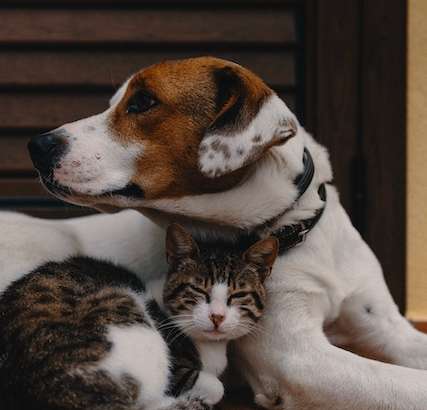Contributed by Jin Park, 9 to 5 Pets
D
 id you welcome a new pet over the holidays? You are certainly not alone if you think that having two pets is better than one; but introducing a new pet to your resident pet can be a tricky process. It may end up being an easy transition where the pets become the best of friends; or the process may take longer and they may end up merely tolerating each other. Whatever the case, the goal of the transition is to make sure they can live harmoniously together. Here are a few tips to ensure a smooth homecoming.
id you welcome a new pet over the holidays? You are certainly not alone if you think that having two pets is better than one; but introducing a new pet to your resident pet can be a tricky process. It may end up being an easy transition where the pets become the best of friends; or the process may take longer and they may end up merely tolerating each other. Whatever the case, the goal of the transition is to make sure they can live harmoniously together. Here are a few tips to ensure a smooth homecoming.
 Introducing your new dog to a resident dog
Introducing your new dog to a resident dog
The Humane Society recommends introducing dogs to each other on neutral territory: outdoors. This makes sense because it reduces the risk of territorial behavior. Pay attention to each dog’s body language and if you notice any defensive or wary response, immediately and calmly interrupt the interaction. Make sure that you allow the dogs to determine the pace of the introduction. This process may be quick or it may take more time. It is important to remember not to force the dogs to interact. Once the dogs are able to view each other at a close proximity in a calm manner, allow one dog to walk behind the other, and then switch. If they remain comfortable then you may allow them to walk side by side. Once the dogs are brought back to your home, make sure you keep a close eye on them, and reinforce positive interaction with treats. READ MORE
.
Introducing your new cat to other pets
For cats, the Humane Society recommends having realistic expectations. A cat and a dog may never like each other, but choosing a cat with a similar personality and activity level to your current pet may increase the chances of them getting along. For example, an older cat or dog might not appreciate the high energy level of a kitten. Make sure you allow time for the new cat to adjust to you and their new home by confining them to their own room for several days to a week. Start feeding the pets on opposite sides of a closed door to associate the presence of each other with pleasant things such as food. It is also important to introduce the pets in an area that neither pet considers its sanctuary. Make sure to repeat supervised face-to-face sessions before leaving them alone together.
READ MORE on introducing a new cat to a resident cat.
READ MORE on introducing a new cat to a resident dog.
You can’t predict if your new pet will get along with your resident pet. Should something go wrong and the introductions don’t seem to be going well, contact a professional trainer or animal behaviorist. Integrating a new pet may be a long daunting task, but the reward of a harmonious household will be worth it!

